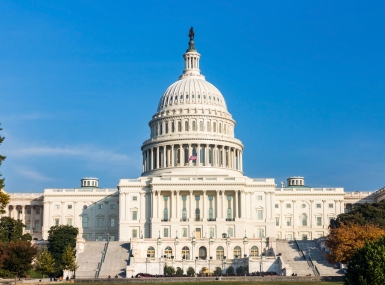Environmental Protection Agency announces $232 million in grants to clean up Brownfield sites
Author

Charlotte Mitchell Duyshart

Rachel Yeung
Upcoming Events
Related News

Key Takeaways
On September 6, the EPA announced $232 million in grant funding through the EPA’s Brownfields Multipurpose, Assessment, RLF, and Cleanup (MARC) program. Counties are eligible for funding to assess and clean up polluted brownfields within their jurisdiction.
What are Brownfields?
Brownfield sites are properties that have been exposed to pollutants, hazardous substances or contaminants. These abandoned, damaged areas cause nearby residents to face environmental concerns and reduced property values.
The purpose of Brownfields program funding is to assess and clean up contaminated sites to remove harmful substances and pollution. Counties can also use Brownfields funding to redevelop these sites to return them to productive use.
Counties with Brownfields sites
Nearly two out of every three counties, 64 percent, have an identified brownfield property. Through the Brownfield funding opportunities, counties can clean up and revitalize these contaminated and abandoned properties.
Brownfield grant programs
Counties are eligible to apply for the following Brownfields Program grants:
Cleanup Grants: These grants fund the cleanup of sites contaminated by hazardous substances, pollutants, or petroleum. They support the removal or treatment of environmental contaminants to restore the safety and usability of affected properties.
Community-wide Assessment Grants: These grants help communities create and manage inventories of Brownfield sites. They support activities such as prioritizing sites for redevelopment, conducting community outreach, performing site assessments, developing cleanup strategies, and formulating reuse plans.
Assessment Coalition Grants: These grants are similar to Community-wide Assessment Grants but are intended for a lead entity to partner with two to four smaller, eligible entities. This collaborative approach assists counties and other organizations that may lack the capacity to apply for or manage EPA grants independently.
Revolving Loan Fund Grants: These grants offer no-interest or low-interest loans for eligible brownfield cleanups.
EPA anticipates awarding approximately 200 grants nationwide this cycle at amounts ranging from $500,000 to $4 million per award. This funding is provided by the Bipartisan Infrastructure Law, (P.L 117-58). Applications are due by November 14, 2024 through grants.gov.
Resources
Multipurpose, Assessment, RLF, and Cleanup (MARC) Grant Application Resources
NACo’s Bipartisan Infrastructure Law Resource
Office of Brownfields and Land Revitalization Open Webinars
Assessment Grants: September 19, 2024 at 12:00 pm ET
Cleanup Grants: September 24, 2024 at 12:00 pm ET
Resource
Revitalizing Communities Through Redevelopment: County Brownfields Primer

Related News

U.S. House of Representatives passes SPEED Act and other permitting reform bills
On December 18, the U.S. House of Representatives passed the SPEED Act (H.R. 4776). The SPEED Act would strengthen county involvement in decision-making and make needed commonsense reforms to the federal environmental review process.

House Natural Resources Committee advances the Endangered Species Act Amendments Act of 2025
On December 17, the House Natural Resources Committee advanced the Endangered Species Act (ESA) Amendments Act of 2025 (H.R. 1897). The version passed by the committee adopted several changes from the initial bill and would address key county concerns by improving the implementation of the ESA. The legislation now awaits a floor vote before the whole U.S. House of Representatives.

Counties and Railroads: Shared Priorities for the Next Surface Transportation Bill
County leaders from across the country have a vital opportunity to ensure their infrastructure priorities are front and center.